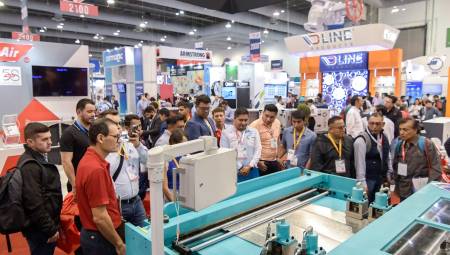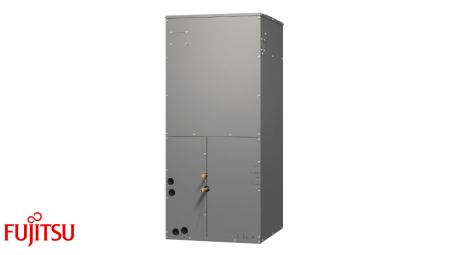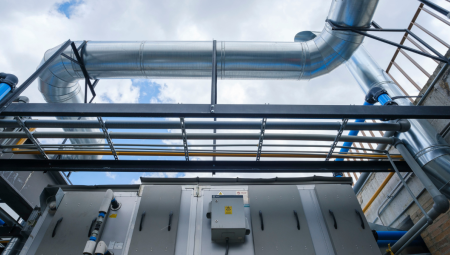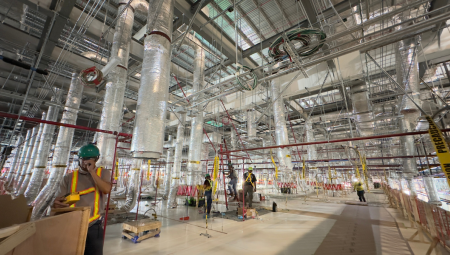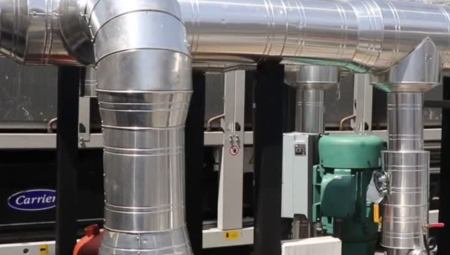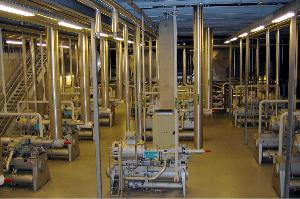 Meat processors are increasingly opting for ammonia as a natural refrigerant.
Meat processors are increasingly opting for ammonia as a natural refrigerant. By: eurammon*
Whether beef, pork or chicken, this food is one of the most common products on European menus. For example, each citizen of the European Union eats on average 90 kilograms of meat a year – and the number is rising. In meat processing there are strict rules regulating freshness, quality and hygiene to ensure that meat products meet high standards.
Refrigeration, in this case, plays an essential role in meeting these standards. Used refrigeration equipment must be safe and reliable to handle the cold requirements of production and storage facilities. Increasingly, the meat processing industry is opting for refrigeration systems that use ammonia as a natural refrigerant.
"Not only operators benefit from its excellent thermodynamic properties, which result in low electricity consumption and therefore low operating costs," says Monika Witt, CEO of eurammon, the European initiative for natural refrigerants. "Ammonia cooling systems also work safely and reliably, and are also environmentally friendly, as ammonia does not contribute to the greenhouse effect."
10,000 pigs a day on average
Danish Crown, a meat specialist, is a company that is already reaping the benefits of using ammonia as a refrigerant. Since 2005, Danish Crown has managed the world's most modern pig slaughterhouse near the small Danish town of Horsens, which is also one of the largest in the world, with a production area of about 75,000 m2. Every day an average of 10,000 pigs arrive for slaughter. For the new plant, refrigeration experts from Johnson Controls Denmark, in cooperation with the firm Güntner, planned and installed a two-stage ammonia cooling system.
To supply air conditioning to the staff rooms, an indirect glycol cooling circuit was connected to the system by means of a plate heat exchanger. The cooling system itself is loaded with 48 tons of ammonia and cools the different processing and storage areas as efficiently as possible, by direct evaporation of the refrigerant. Through a network of pipes of an approximate length of 15 kilometers, a total of 175 valve stations distribute the ammonia to about 150 air coolers, which distribute the cooled air.
The various temperature requirements throughout the plant are met using twelve screw compressors manufactured by Sabroe, with a total capacity of approximately 14 MW. Four of the compressors generate a temperature of -3°C, three of them cool to -10°C, and the remaining five to -25°C. The air supplied to the other parts of the plant, such as the offices, kitchen and dining room is also conditioned. Because air channels could not be used for hygiene reasons, the system uses a large number of compact, soundproofed air conditioning units installed on the roof to transport the processed air accurately to where it is required.
A total of 142 heat exchangers manufactured by Güntner are used to cool the air, or heat it in case dehumidification is required. These units are made of stainless steel with aluminum components, and measure up to 2.5 x 4 m. These measures ensure that evaporation temperatures are never unnecessarily low, and that all requirements are met while minimizing energy consumption. Savings are also realized through heat recovery, which is used to recover up to 5 megawatts in total of oil coolants, from refrigerant overheating and condensation heat. A 1.8 megawatt heat pump uses this thermal energy to heat process water for the slaughterhouse.
A consistently 'green' proposal
Organic meat producer Mühlviertler Alm Biofleisch GmbH has also opted for an ammonia-based solution at its production plant in Unterweißenbach, Austria. All the meat that is processed in this place to turn into sausages, ham and bacon comes from organic farms. To ensure that the company can systematically adhere to its 'green' approach to meat production, engineering consultants KWN Engineering designed a water chiller loaded with R723 refrigerant, which is an azeotropic mixture composed of 60% ammonia and 40% dimethyl ether.
Loaded with 55 kg of this mixture, the refrigeration system manufactured by Frigopol and installed by Hauser provides cooling for the processing and storage rooms as well as air conditioning for the personnel rooms, with a cooling capacity of about 111 kW. Cooling is supplied by heat absorption using a mixture of water and 38% propylene glycol, which is then removed to the evaporator. There, the heat is transferred to R723, which evaporates at -11°C in the refrigerant circuit. Depending on the required cooling capacity, the gaseous refrigerant is then compressed using one or both open-type reciprocating compressors.
The heat is finally removed by the cooled air condenser, which liquefies the R723 to a temperature of between 20 and 40°C, depending on the outside temperature. It then flows back to the evaporator, where the refrigerant oil carried by the R723 is deposited from the compressor to the refrigerant circuit. Thanks to the dimethyl ether the refrigerant is able to mix well with the oil and can be safely transported through the suction line back to the compressor, where it lubricates the moving parts.
For this reason, the use of R723 allowed Frigopol to cope without a separate oil return system and maintain the simplicity of the cooling system design. Apart from this, the comparatively low final compression temperature of R723 – which is due to its alcoholic component – made it possible to use an air-cooled condenser instead of a water-cooled condenser for heat removal. Frigopol adjusted the condenser with four fans to reduce the noise level of the system, which was installed outside.
The system also contains a 24 kW superheater to transfer waste heat to the process water.
Saving money without mistreating the environment
"These project examples illustrate how the high demand for cooling in the meat processing industry using natural refrigerants can be met," concludes Monika Witt of eurammon. "From the perspective of climate change and rising energy costs, high efficiency and environmental safety make natural refrigerants an ideal choice for economical and sustainable refrigeration."
Ammonia (NH3)
Ammonia has been successfully used as a refrigerant in industrial refrigeration plants for over 130 years. It is a colorless gas, which liquefies under pressure and has a pungent odor. Ammonia has no ozone depletion potential (ODP = 0) or direct global warming potential (GWP = 0). Thanks to its high energy efficiency, its contribution to the indirect global warming potential is also low.
Ammonia is flammable and toxic to the skin and mucous membranes. However, its ignition energy is 50 times that of natural gas and it will not burn without a flame to support it. Due to the high affinity of ammonia for atmospheric moisture, it is classified as "hardly flammable". Ammonia is toxic, but has a characteristic pungent odor that makes an alert possible at low concentrations of 3 mg/m³ in the air. This indicates that ammonia becomes evident at levels much lower than those that could put health at risk. In addition, ammonia is lighter than air and therefore rises rapidly.
About eurammon*
eurammon is a joint European initiative of companies, institutions and individuals promoting greater use of natural refrigerants. As a source of knowledge for the use of natural refrigerants in refrigeration engineering, the initiative considers that its obligation is to create a platform for the exchange of information and the promotion of public awareness and acceptance of natural refrigerants. The aim is to promote the use of natural refrigerants for the sake of a healthy environment and thus the promotion of a sustainable approach to refrigeration engineering. eurammon offers comprehensive information on all aspects of natural refrigerants to experts, politicians and the general public.
Internet URL: www.eurammon.com
Contacts Dr. Karin Jahn (Frankfurt, Germany). E-mail:[email protected]







